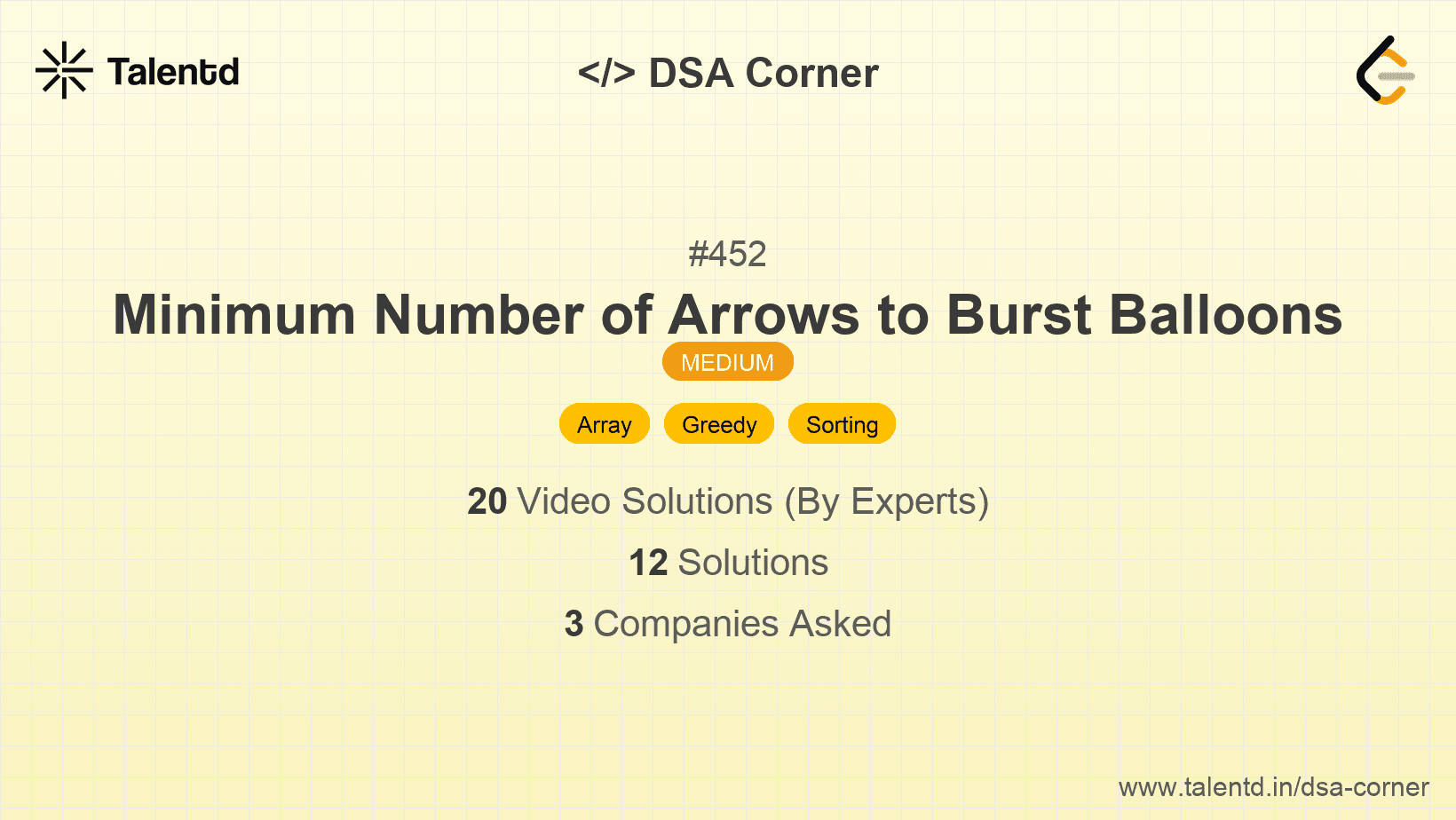
Sponsored
Sponsored
This approach involves sorting the balloons by their end points. Once sorted, we shoot an arrow at the end point of the first balloon, and then continue moving through the list, checking if subsequent balloons overlap with the burst of the arrow. If a balloon does not overlap, we need an additional arrow for it.
Time Complexity: O(n log n) due to the sorting step, where n is the number of balloons.
Space Complexity: O(1) if we ignore the space used for sorting.
1#include <stdio.h>
2#include <stdlib.h>
3
4int compare(const void *a, const void *b) {
5 return ((int*)a)[1] - ((int*)b)[1];
6}
7
8int findMinArrows(int** points, int pointsSize, int* pointsColSize){
9 if (pointsSize == 0) return 0;
10 qsort(points, pointsSize, sizeof(int*), compare);
11 int arrows = 1;
12 int end = points[0][1];
13 for (int i = 1; i < pointsSize; i++) {
14 if (points[i][0] > end) {
15 arrows++;
16 end = points[i][1];
17 }
18 }
19 return arrows;
20}
21
22int main() {
23 int pointsColSize[] = {2, 2, 2, 2};
24 int* points[] = {(int[]){10, 16}, (int[]){2, 8}, (int[]){1, 6}, (int[]){7, 12}};
25 int result = findMinArrows(points, 4, pointsColSize);
26 printf("%d\n", result);
27 return 0;
28}This C solution uses standard libraries to sort a list of balloon intervals by their end points, ensuring we minimize the number of arrows used. Sorting ensures that at every step, we maximize the number of balloons burst by a single arrow.
The function compare is used with qsort to sort the intervals by their end points. Then, we maintain an `end` variable to store the position of the last arrow shot. We iterate through the intervals, and for each interval that does not overlap with the current `end`, we shoot a new arrow and update `end`.
This approach is adapted from the interval scheduling maximization pattern, where we attempt to find the maximum number of non-overlapping intervals. By sorting the intervals, we can focus on selecting the maximum number of compatible balloons.
Time Complexity: O(n log n) resulting from sorting operations.
Space Complexity: O(1) when sorting space considerations are minimized.
1
The C implementation sorts balloons by their starting x coordinate to maximize the intervals which can overlap and thus require fewer arrows.
Overlapping intervals are managed by checking the end position of current overlaps. If overlaps occur, the continuation of overlapping checks determines the next 'strongly ending' balloon that indicates a need for a new arrow, thereby ensuring no excess arrows.